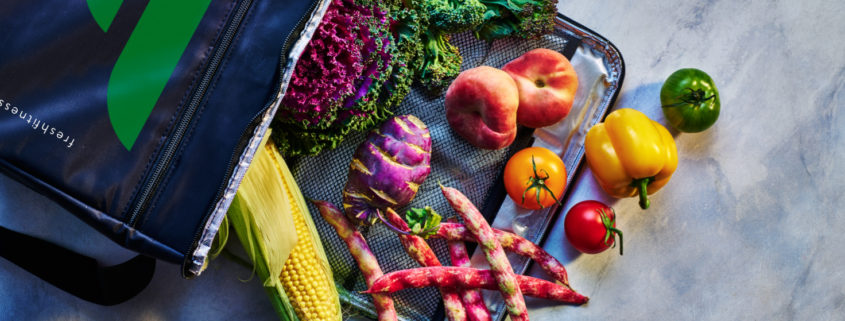Why fibre is the one ingredient we need in our diets

Fibre is the topic on everyone’s lips at the moment. And with good reason. As we dig deeper into the research, the connection between dietary fibre intake and good health becomes clearer. Fibre is an essential dietary component, and yet one that is often overlooked.
What is fibre?
Dietary fibre is a type of carbohydrate sometimes known as roughage, it refers to the indigestible parts of plant-based foods. Unlike other carbs such as sugars and starch, fibre is not digested and broken down into digestible sugar molecules in the small intestine, rather, it reaches the large intestine or colon pretty much intact.
Fibre has a lengthy list of benefits, all relating to various aspects of our health and overall well-being. It promotes optimal digestive health, and helps stabilise blood sugar levels. It has also been suggested it can assist with weight management by increasing feelings of satiety. Further research has also indicated it could even reduce the risk of cardiovascular disease, type 2 diabetes, and bowel cancer.
Emerging research suggests there may be another reason high fibre foods help to keep you full. When fibre is digested in the gut, a chemical called acetate is produced. Acetate has been said to affect the brain and regulate hunger, due to its influence on hunger hormones.
What are the different types of fibre?
Soluble fibre – including pectins and beta glucans, found in things like oats, beans, lentils and fruits, dissolves in water to form a gel-like substance, which increases food transit time between the stomach and the small intestine. This process slows the absorption of glucose into the bloodstream, which helps to keep you feeling fuller for longer (or at least until lunchtime rolls around) as well as promoting stable blood sugar levels.
Soluble fibre also supports the growth of the good bacteria required for optimal gut health.
Insoluble fibre – including cellulose and lignins, can be found in whole-grains, many veggies and nuts. As the name suggests, insoluble fibre does not dissolve in water. It remains relatively intact and thus speeds up the passage of food through the digestive system. This helps to maintain good digestive health by increasing stool bulk, promoting regularity and preventing constipation.
Note, most fibre-rich foods usually contain both types of fibre, but the amount of soluble vs insoluble varies.
How much we should be having?
Adults should aim to consume around 30g per day, which should come from a combination of both soluble and insoluble varieties.
For example, bran flakes for breakfast, a sandwich for lunch with two slices of wholemeal bread, an apple and some pistachios as a snack and then a jacket potato with baked beans for dinner.
On average, however, we consume far less than this – approx 18g. Worryingly, the trend in low-carbohydrate diets could worsen this problem.
A recent paper released disclosed the implementation of recommendations to increase dietary fibre intake and to replace refined grains with whole grains is expected to benefit human health in a number of ways (Reynolds et al., 2019).
Due to its wealth of benefits and emerging research, greater focus should undoubtedly be placed on increasing the amount of fibre we consume. Many dietary improvements are relatively minor and easy to implement, for example increasing the quality of carbohydrates we consume.
Working on this area of our diet sounds like a no-brainer!
How can we get more in our diets?
It’s far easier to do than you may think:
-Go for high fibre breakfast cereals such as bran flakes or oats and top with fruit / dried fruit, seeds or chopped nuts
-Pick wholemeal / wholegrain breads and pasta, brown rice, quinoa or bulgar wheat over refined carbohydrates to have with your meals.
-Make sure you’re having plenty of vegetables at each meal time – either added to curries, sauces or stews or on the side.
-Eat the peels of your vegetables and fruits whenever possible.
-Try to eat more fruits and vegetables, rather than opting for juices.
-Add beans, lentils or chickpeas to stews, curries and salads or even try and make your own dips e.g. hummus.
-Mix up your snacks – include things such as fruit, nuts, seeds and crudités.
Reynolds, A., Mann, J., Cummings, J., Winter, N., Mete, E. and Te Morenga, L. (2019). Carbohydrate quality and human health: a series of systematic reviews and meta-analyses. The Lancet, 393(10170), pp.434-445.
Georgia Head
FFF Nutritionist
- The Comfort of Tradition: Why We Crave Holiday Foods - December 23, 2024
- Is There a Place for Ultra-Processed Foods in Your Diet? - November 29, 2024
- Tempeh and Quinoa Power Bowl Recipe - November 7, 2024
